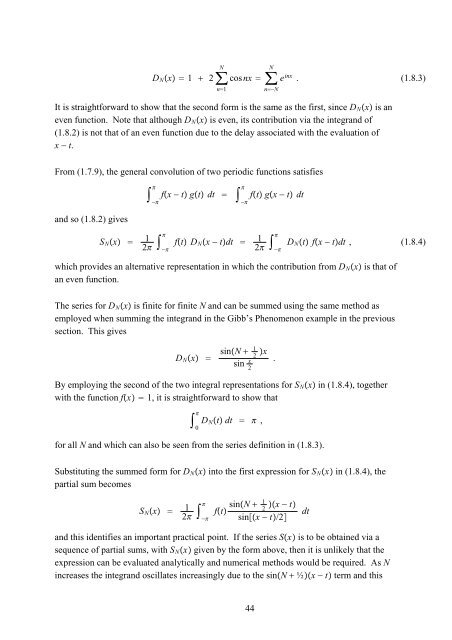Fourier Series
Fourier Series
Fourier Series
Create successful ePaper yourself
Turn your PDF publications into a flip-book with our unique Google optimized e-Paper software.
ND N x 1 2∑n1Ncosnx ∑ e inx . (1.8.3)n−NIt is straightforward to show that the second form is the same as the first, since D N x is aneven function. Note that although D N x is even, its contribution via the integrand of(1.8.2) is not that of an even function due to the delay associated with the evaluation ofx − t.From (1.7.9), the general convolution of two periodic functions satisfiesand so (1.8.2) gives fx − t gt dt − ft gx − t dt−S N x 12−ft D N x − tdt 12−D N t fx − tdt , (1.8.4)which provides an alternative representation in which the contribution from D N x is that ofan even function.The series for D N x is finite for finite N and can be summed using the same method asemployed when summing the integrand in the Gibb’s Phenomenon example in the previoussection. This givesD N x sinN 1 2 xsin x 2.By employing the second of the two integral representations for S N x in (1.8.4), togetherwith the function fx 1, it is straightforward to show that0DN t dt ,for all N and which can also be seen from the series definition in (1.8.3).Substituting the summed form for D N x into the first expression for S N x in (1.8.4), thepartial sum becomesS N x 12−ft sinN 1 x − t2sinx − t/2dtand this identifies an important practical point. If the series Sx is to be obtained via asequence of partial sums, with S N x given by the form above, then it is unlikely that theexpression can be evaluated analytically and numerical methods would be required. As Nincreases the integrand oscillates increasingly due to the sinN ½x − t term and this44
















